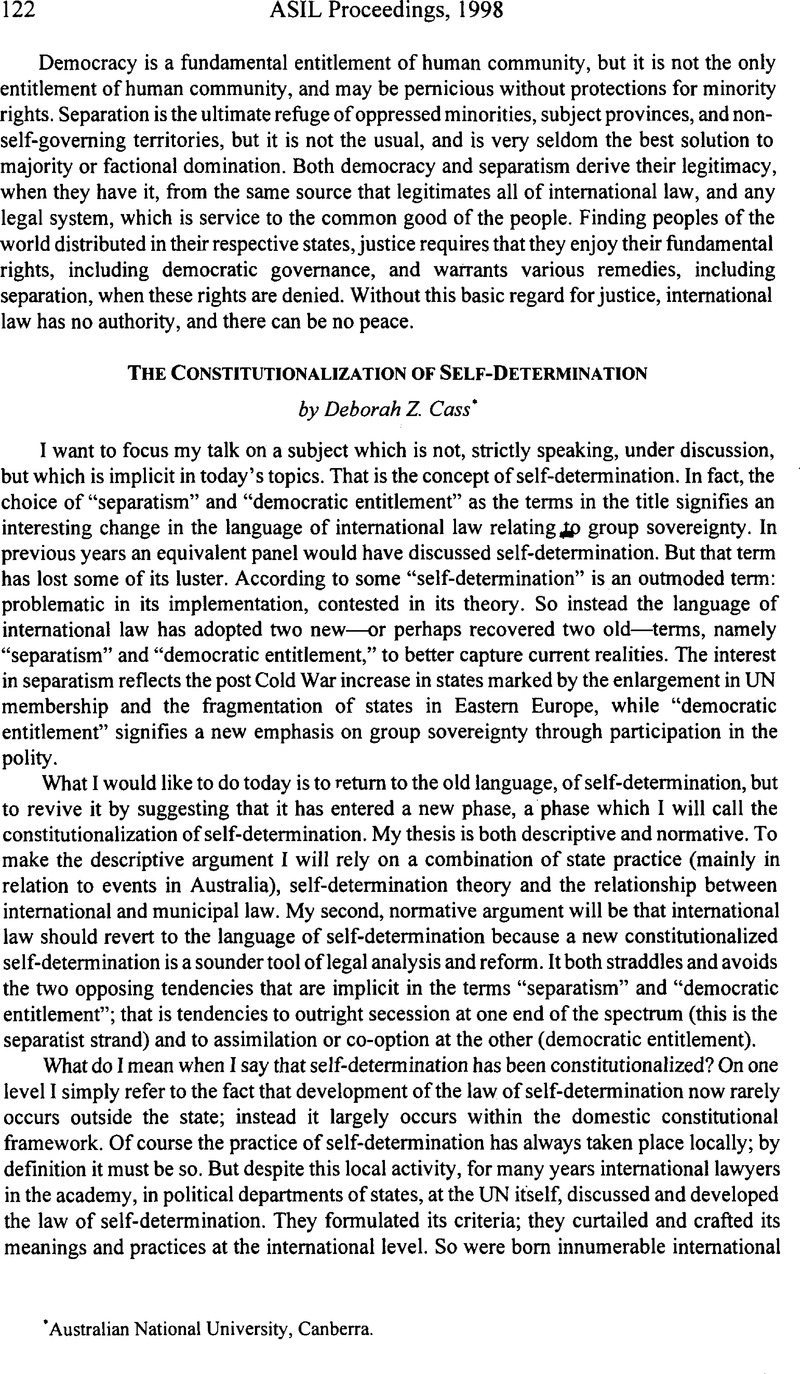No CrossRef data available.
Published online by Cambridge University Press: 28 February 2017

1 Accordingly, Australia was settled, not conquered (hence indigenous law did not survive) and indigenous people, at common law, had no rights to land. It was acknowledged as a matter of fact that Aboriginal people may have had their own social rules and customs, but that system, as a matter of Australia law, did not displace the assumption that Australia had been settled. See Milirrpum v. Nabalco Pty. Ltd. (1971) 17 F.L.R. 141.
2 (1992)175 C.L.R. 1.
3 1975 I.C.J. 12.
4 In Milirrpum v. Nabalco Pty. Ltd. (1971) 17 F.L.R. 141, at 267, Blackburn, J. accepted that Aboriginal people had a “subtle and elaborate system” of “social rules and customs.”
5 Native title continues where indigenous people could show their connection with the particular land under their customary law, and that this connection had not been broken and that title had not been extinguished by subsequent acts of the state such as the grant of a title in fee simple.
6 The High Court later rejected an Aboriginal claim for independent sovereignty finding that this would have been inconsistent with Mabo (No.2): Coe v. Commonwealth (No. 2) (1993) 118 A.L.R. 193.
7 Native Title Act, 1993, (Cth).
8 Aboriginal Land Rights Act, 1976, N. Terr. Ord..
9 Racial Discrimination Act, 1975 (Cth).
10 Aboriginal people elect representatives to 35 regional councils of ATSIC.
11 Wik Peoples v. Queensland (1996) 141 A.L.R. 129.
12 Kruger v. Commonwealth (1997) 146 A.L.R. 126.
13 Kartinyeri v. Commonwealth (1998) 152 ALR 540.